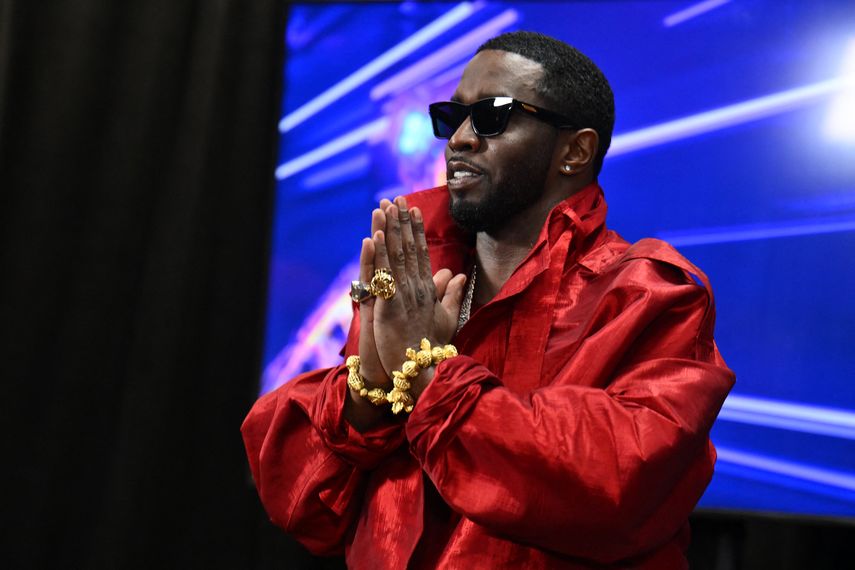Unpacking The Name Sean Hammond: Origins, Pronunciation, And Usage Today
Names carry a great deal of history, don't they? Each one, in a way, tells a story, a little piece of where words come from and how they change over time. When we hear a name like Sean Hammond, it's pretty interesting to think about the roots of that first part, "Sean," and what it might mean for someone who carries it. This name, "Sean," is something many people come across, and yet, its true background and how it works in language can sometimes be a bit of a mystery.
So, you know, the name "Sean" has a very distinct Irish heritage, which is kind of neat. It's not just a random collection of letters; it has a very specific journey from another language. This journey means it follows a completely different set of rules when you think about how it's spelled, or even how you say it out loud, compared to many English names. It's almost like it has its own little linguistic playbook, which is pretty cool.
People often have questions about names that seem a little different, like how they're said or what they really mean. For example, some folks might wonder if "Sean" is pronounced a certain way, or if it's a word from another language entirely. This exploration of the name "Sean," especially as it appears in "Sean Hammond," can really help us get a better handle on these sorts of linguistic puzzles and, you know, just appreciate the richness of language itself.
Table of Contents
- The Story Behind the Name "Sean"
- Key Aspects of the Name "Sean"
- How "Sean" Sounds: Pronunciation Nuances
- Grammar Puzzles with "Sean" and Other Names
- Common Questions About the Name "Sean"
The Story Behind the Name "Sean"
The name "Sean" itself, as you might find in "Sean Hammond," holds a really fascinating linguistic journey, you know. It's actually what we call a "hibernization" of the English name "John." This means it's, in a way, a transliteration of "John" into a form that can be pronounced in Irish. It's a process where a name crosses over from one language to another, adapting its sounds and spelling to fit the new tongue, which is pretty clever.
So, you see, "Sean" (and sometimes it's written as "Seán" or "Séan" in Irish, too it's almost like having different versions of the same song) really shows how names evolve. It's not just a direct copy; it's a transformation that respects the phonetic rules of the Irish language. This is why, for instance, an Irish name like "Sean" will follow a completely different set of rules compared to, say, a purely English name. It's a bit like comparing apples and oranges, in a linguistic sense, you know.
This idea of names changing and adapting isn't just limited to "Sean," of course. We often see it with other names, too. Think about why someone named Robert might be called "Bob," or why "John" sometimes becomes "Jack." There's a whole history and reason for this practice in changing English names of people, and it often comes down to centuries of linguistic shortcuts, affectionate nicknames, or even, you know, just the way sounds shift over time in a language. It's pretty interesting how these things happen, really.
The cultural significance of a name like "Sean" is also pretty big. Because it comes directly from the Irish language, it carries a sense of heritage and identity for many people. When you hear "Sean Hammond," that "Sean" part immediately connects to a rich tapestry of Irish culture and history. It's not just a sound; it's a link to a place and a people, which is quite something, in a way.
Understanding this background helps us appreciate the depth behind names that might seem simple at first glance. It's not just about what a name means in a dictionary, but also about its journey through time and language. The way "John" became "Sean" is a really good example of how languages interact and borrow from each other, constantly shaping and reshaping the words we use every day, you know. It's a rather dynamic process, actually.
Key Aspects of the Name "Sean"
When we look at the name "Sean," especially in a combination like "Sean Hammond," there are some key things that stand out, you know. These aren't personal details about a specific person, but rather facts about the name itself, which are quite important for understanding its nature. It's like looking at the blueprint of a word, in some respects.
| Aspect | Detail |
|---|---|
| Name | Sean |
| Origin | Irish (a hibernization of "John") |
| Variants in Irish | Seán, Séan |
| Common Pronunciation | Often like "Shawn" (though with nuances) |
| Implied Meaning | "God is gracious" (from its root, "John") |
| Cultural Context | Strongly associated with Irish heritage and language |
| Linguistic Category | A transliterated given name |
This table, you know, gives us a quick look at the core elements of the name "Sean." It helps to see that its origin is quite specific, coming from Irish, and that it's a direct link to the English name "John." The different ways it can be spelled in Irish, like "Seán" or "Séan," also tell us a bit about its flexibility within its native language, which is pretty neat. It's not just one fixed form, you see.
The pronunciation, which we'll get into more, is also a really big part of the name's identity. It's often where people get a little confused, or where they notice something different about it. And, you know, while the name "Sean" itself doesn't directly mean "God is gracious," its connection to "John" means it carries that historical meaning with it. It's like a legacy, in a way, that comes with the name. This kind of detail is pretty vital for understanding the full scope of a name's story, don't you think?
The cultural context is arguably one of the most significant parts. When you hear "Sean," it typically brings to mind Irish connections, whether it's through literature, history, or just general awareness. This association is very strong and helps to define the name's place in the world. It's not just a sound; it's a cultural marker, basically. This is something that makes names like "Sean" rather special, you know.
How "Sean" Sounds: Pronunciation Nuances
One of the most talked-about aspects of the name "Sean," and something that might come up when you hear "Sean Hammond," is how it's actually pronounced, you know. People often wonder if it's "Shawn," or maybe something closer to "Seen," or even "Sawn." It's a common point of curiosity, and for good reason, because there are some real nuances to it, actually.
The key to understanding the pronunciation often lies in its Irish Gaelic roots. You see, many Scottish and Irish Gaelic words are spelled with an 's' followed by a vowel, and they're pronounced like "sh." This is a pretty common pattern in those languages. So, when you think about the way someone like Sean Connery speaks, you know, how the "Se" in his name starts with that "sh" sound, that's a very good example of this linguistic rule in action. It's not just a coincidence; it's how the language works, really.
So, while "Shawn" is the very, very common pronunciation in English-speaking countries, and it's pretty much accepted, it's worth knowing why it sounds that way. It's because of that "sh" sound from its original language. Some people might try to make it sound slightly different, maybe a little softer, but the "sh" sound is pretty much at the heart of it. It's not typically pronounced like "Sawn" or "Seen" in its traditional Irish form, you know, though regional accents can always play a part.
Understanding this helps to clear up some of the confusion people might have. It’s not just a matter of guessing; there’s a system behind it. The sound is a direct echo of its Gaelic heritage, and that's a pretty cool thing to realize. So, next time you hear "Sean Hammond," you'll have a better idea of why that first name sounds the way it does, and that's quite useful, you know.
Grammar Puzzles with "Sean" and Other Names
Beyond its origins and how it's said, names like "Sean," or even a full name like "Sean Hammond," can sometimes pop up in interesting grammar situations, you know. It's not just about the name itself, but how it fits into sentences, especially when you're talking about groups of people. These little grammar puzzles are pretty common, actually.
For instance, there's that classic question about "my wife and me" versus "my wife and I." People often get a little stuck on that one. The general rule, which is just courtesy in a way, is to put yourself last in a list of nouns. So, if you're talking about a group, you'd typically say "They went to the game with Sean and me," rather than putting "me" first. It's a small thing, but it makes a difference in how a sentence feels, you know.
Similarly, when you're thinking about phrases like "with John and me" or "with me and John," both can be understood, but the first one, "with John and me," is generally the preferred style, especially in print or in school settings. It's a bit like what Peter and John said, if you recall. This preference isn't a strict rule of grammar that makes the other wrong, but it's more about common usage and what sounds a little more formal or polished, which is something to consider, really.
Then there's the whole business of possessives, like "my wife and I's seafood collaboration dinner." People often struggle with the proper way to use a sentence where you and a specific person are involved, especially when you can't just say "our." The correct way to form the possessive in such cases can be a bit tricky, but it's important for clarity, you know. It's about making sure everyone understands who owns what, basically.
Another point that sometimes comes up, not directly about names but in the context of sentences, is the difference between things like "I have been working here for 20 years" and "I have worked here for 20 years." This is about the present perfect tense, and how it's used for actions that started in the past and continue into the present, or actions that happened at an unspecified time in the past. It's a little detour from names, but it shows how precise language can be, actually.
And, you know, there's that phrase "sleep on," which can be a play on words sometimes. Like, "Amy says she slept with Sean as a euphemism for sex, but to Sean the sex was forgettable. Her actually sleeping on top of him is..." This shows how context changes meaning, and how even simple phrases can have layers. So, grammar isn't just about rules; it's about how we use words to convey very specific ideas, which is pretty fascinating, in a way.
Understanding these grammatical points, even when they seem small, can really help someone communicate more clearly, especially when talking about people like Sean Hammond. It's about knowing the subtle ways language works, and that's a pretty valuable skill, you know.
Common Questions About the Name "Sean"
When people encounter a name like "Sean," especially if they're not familiar with its background, a few common questions tend to pop up, you know. These are the kinds of things you might find in a "People Also Ask" section on a search engine, and they often get to the heart of what makes the name unique. So, let's look at some of these frequently asked questions, basically.
Is Sean a word from another language?
Yes, it actually is, you know. "Sean" is indeed a word from another language, specifically Irish. As we talked about, it's a "hibernization" of the English name "John." This means it's a version of "John" that has been adapted to fit the sounds and spelling rules of the Irish language. So, when you hear "Sean Hammond," that "Sean" part carries with it a direct link to Irish linguistic heritage, which is pretty neat, actually. It's not just an English word that happens to sound a certain way.
Is it actually not pronounced shawn and instead it's some sound between shawn and seen? Also, why isn't it pronounced as sawn instead?
This is a very common question, and it gets at the heart of how "Sean" is truly said, you know. While "Shawn" is the most widely accepted and used pronunciation in English-speaking areas, the reason for that "sh" sound comes from Irish Gaelic. In Irish, an 's' followed by a vowel often creates that "sh" sound. So, it's not really a sound between "Shawn" and "Seen," nor is it typically "Sawn." The "sh" sound, as in Sean Connery's name, is the traditional way it's pronounced, reflecting its origins. It's pretty much a direct consequence of Irish phonetic rules, you see. It's just how the language works, really.
What is the history of or reason for this practice in changing the English names of people?
This is a broader question that goes beyond just "Sean," but it's very relevant to understanding names in general, you know. The practice of changing English names, like Robert becoming "Bob" or John becoming "Jack," has a long history. It often comes down to a few things. Sometimes it's about familiarity and affection, creating a shorter, more informal version of a name. Other times, it's due to phonetic shifts over centuries, where certain sounds were easier to say or became more popular. There's also the influence of other languages and dialects. So, while "Sean" isn't a nickname in the same way "Bob" is, its transformation from "John" is part of this larger linguistic tendency for names to evolve and adapt over time. It's a rather fascinating aspect of language, in a way.
Learn more about names and their origins on our site, and link to this page for more linguistic insights.

Pictures of Sean Connery

Download Sean Penn American Actor Stolen Shot Wallpaper | Wallpapers.com

Sean Diddy Combs busca un indulto de Donald Trump